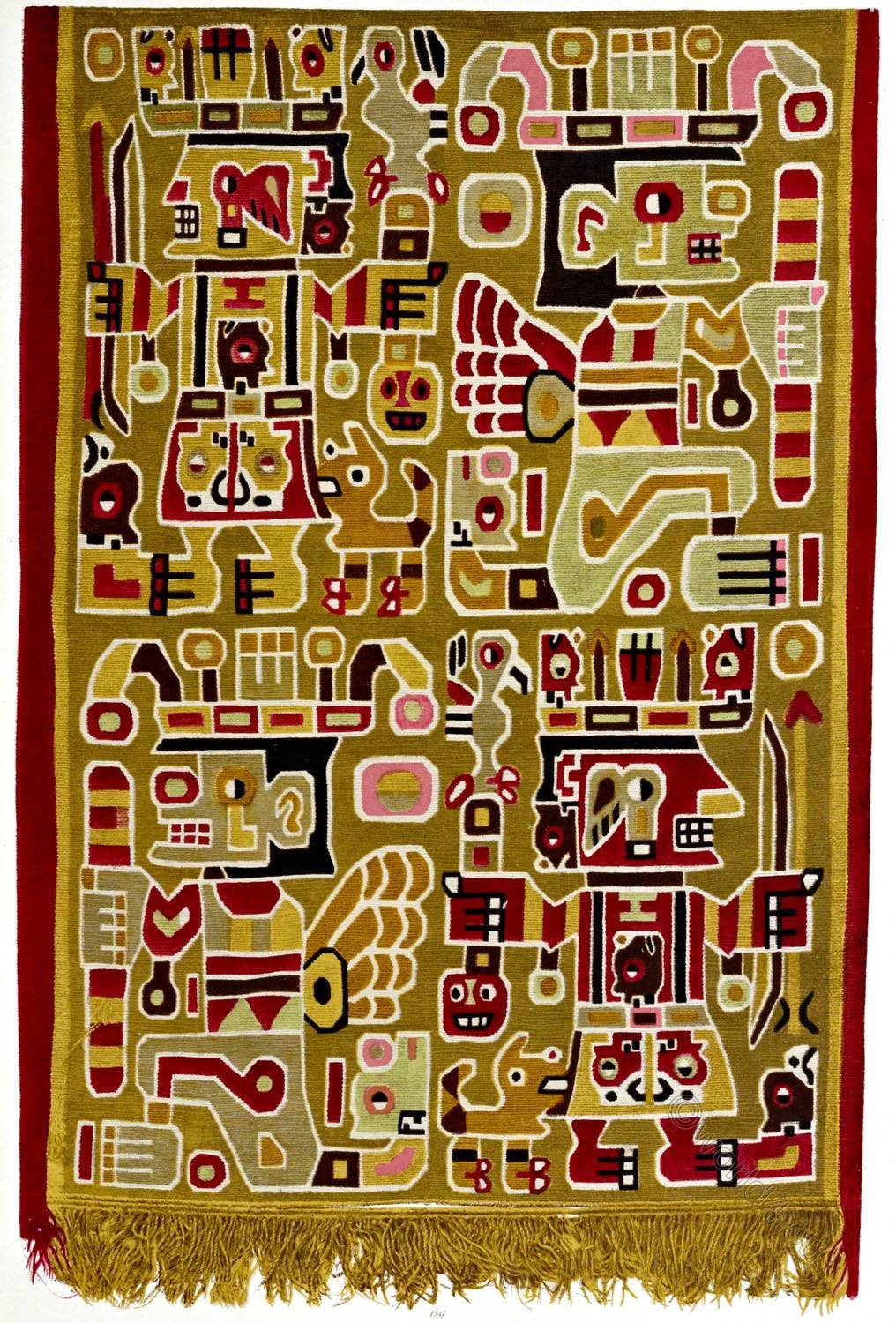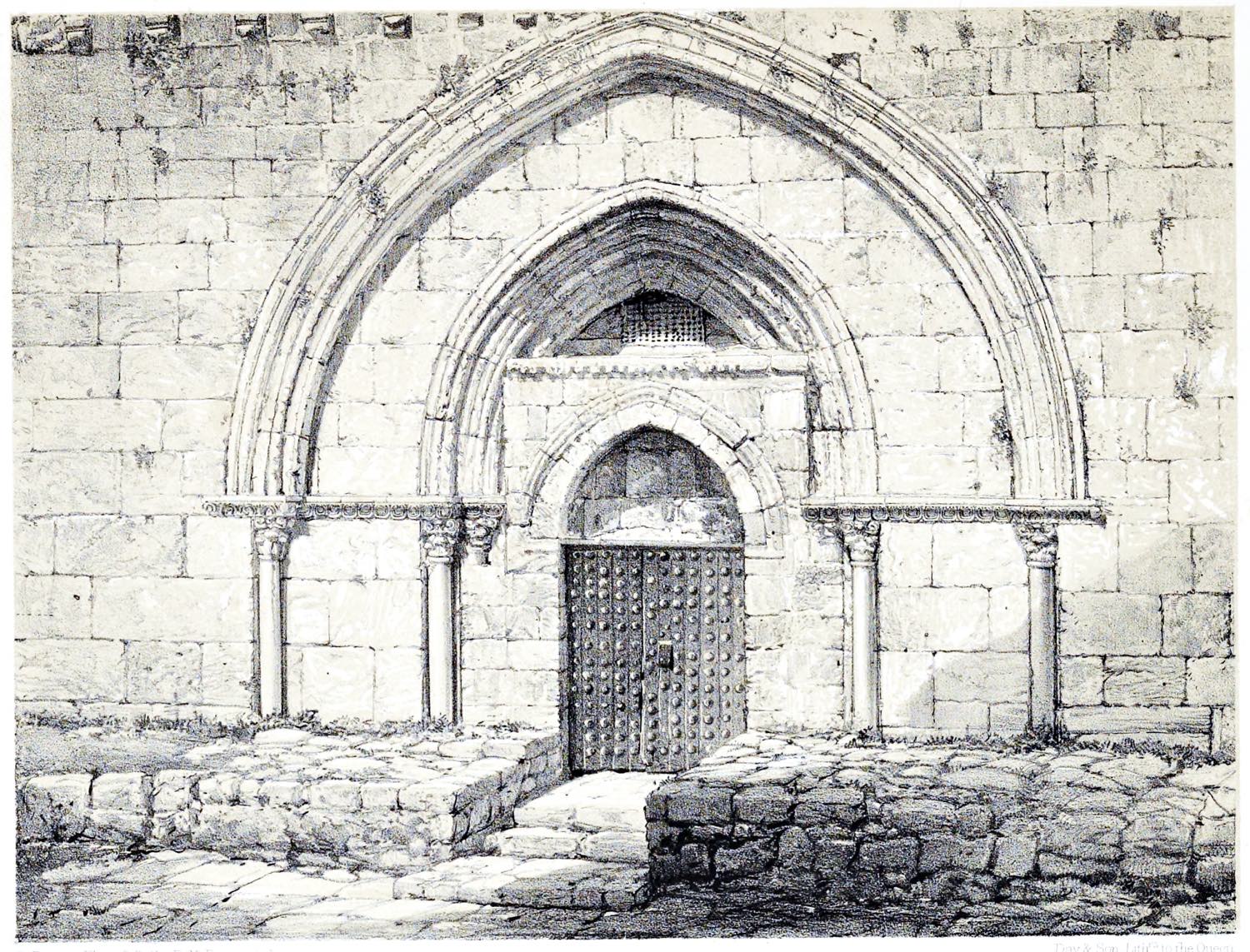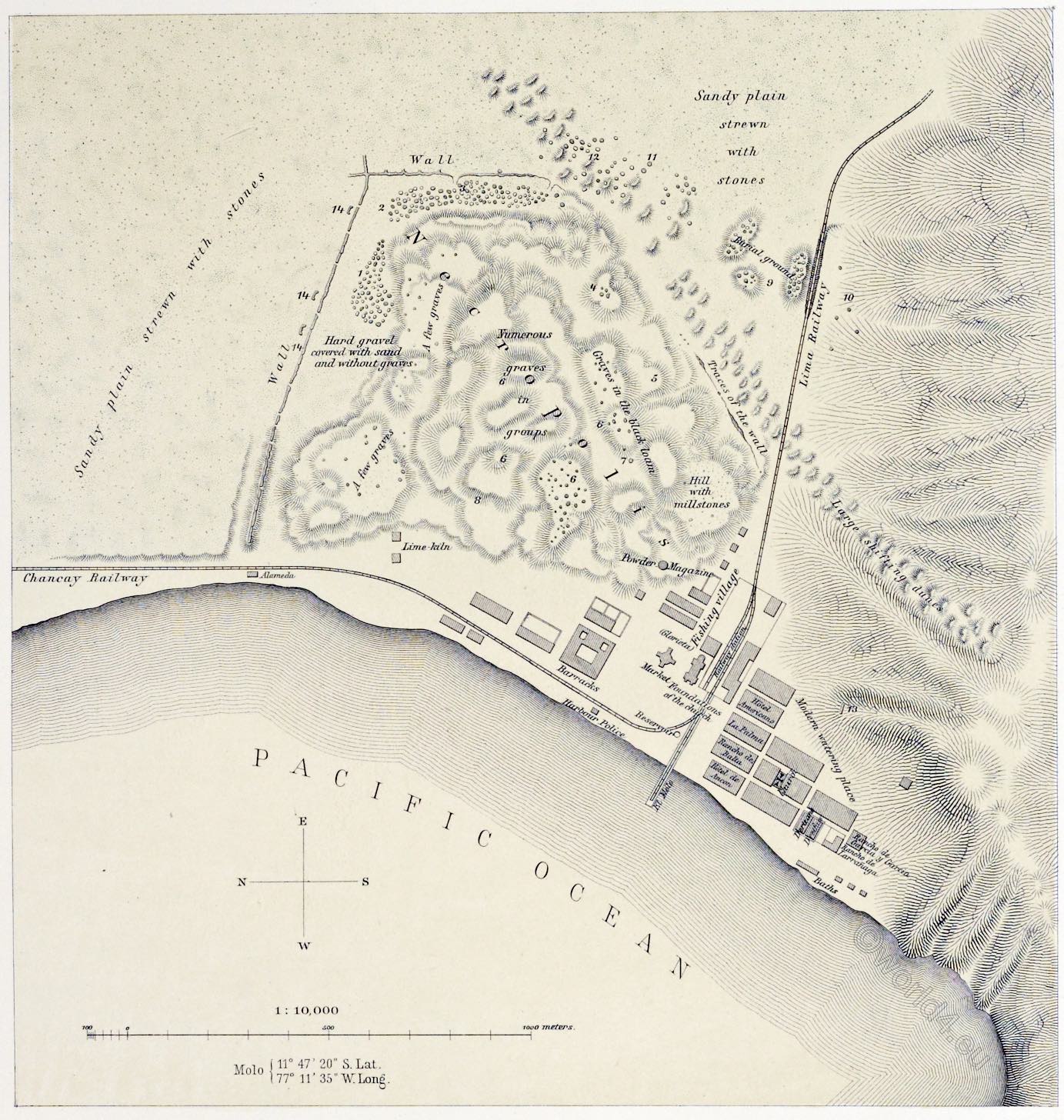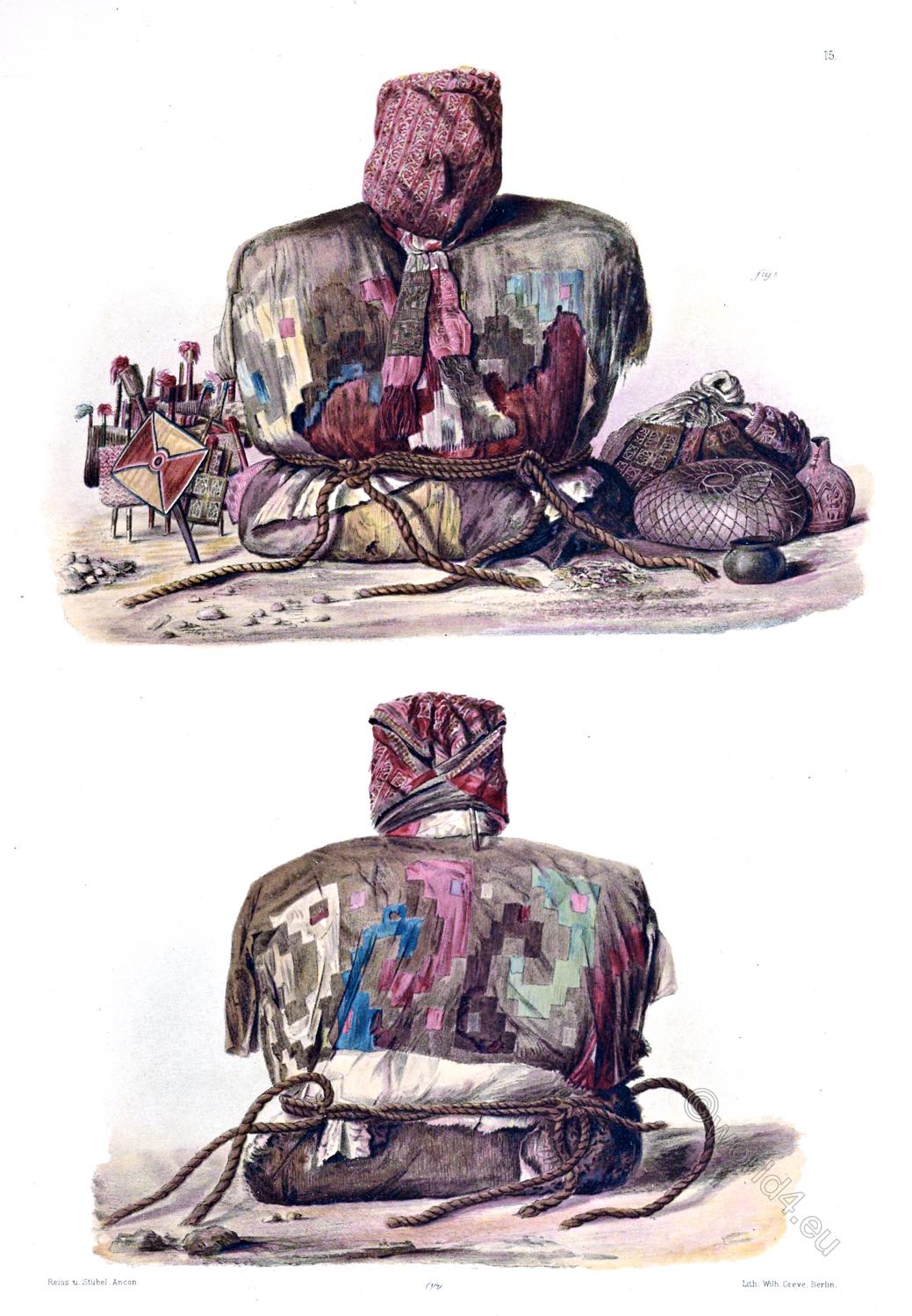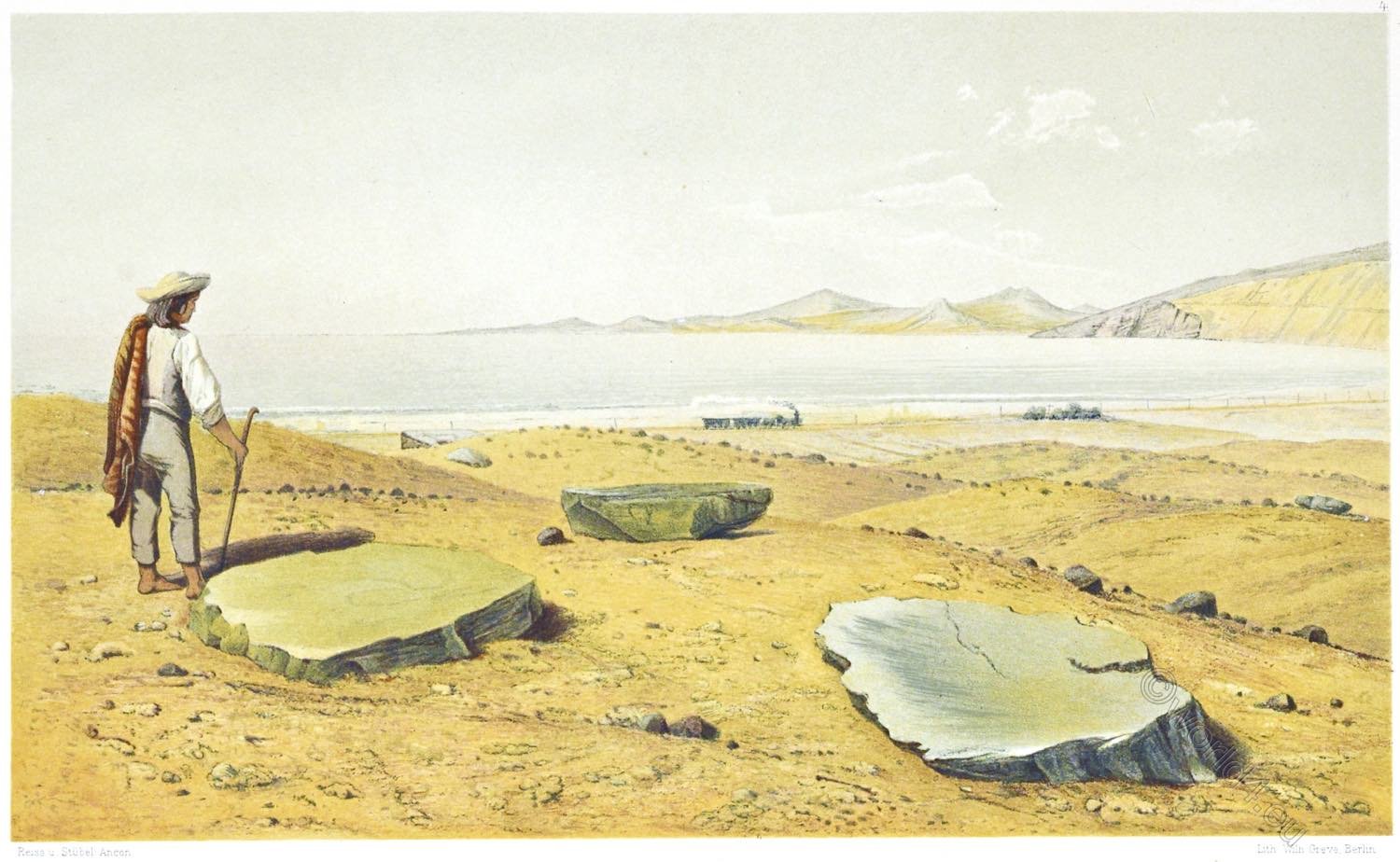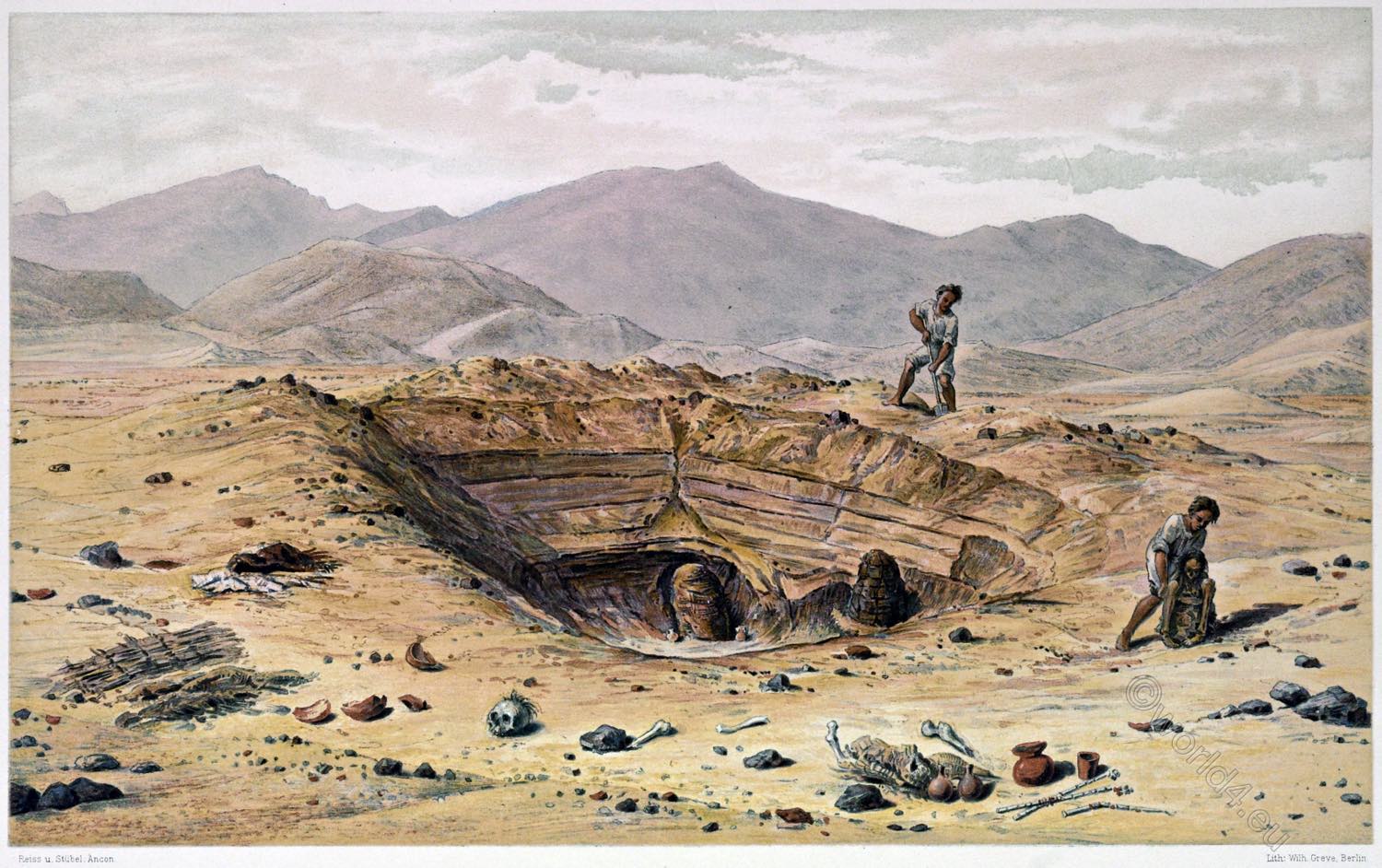
II. The Several Graves.
SECTIONS OF THE GRAVES.
PLATE 10.
Notwithstanding the exact measurements taken of individual graves, these sections must still be so far regarded as ideal, that advantage has been taken of the experience derived from a large number of exhumations. Hence details are introduced, which, owing to the frequently bad state of preservation, could scarcely be fully and clearly observed in any particular grave. The horizontal stratification of the sand is indicated schematically.
Fig. 1. A grave six metres deep, with a funnel-shaped shaft leading to the bottom. The ground plan presents nearly the form of a circle, whence run two side galleries, meeting at right angles, in which the mummies are set up in shallow niches under the shelter of a more compact layer of gravel. Here is a longitudinal section of one of these galleries, with a mummy facing the observer, and surrounded by earthenware, sepulchral tablets and work-baskets. The second mummy, visible in the section drawn in half perspective, lies in the side wall of the other gallery running in the direction of the observer, and in the background of which the upper portion of a third mummy is perceptible. Exact measurements were taken of the proportions of the grave, where was found the mummy figured on Plates 11, 12 and 13.
Fig. 2. Two graves of unequal depth, lying close together, one of which is represented as freed from the sand, which still fills up the other. At the back of the first, and surrounded by gifts, is seated the mummy figured on Plate 16.
Fig. 3—3b. Perspective view with section and ground-plan of a grave containing sixteen mummies (No. 11 of the plan). Thirteen of the mummies, which are only partly provided with false heads, are seated at the bottom of the grave leaning against the enclosing walls. The three others, including that of a child , were placed together in a horizontal position at a higher level of the grave, which is already half choked with sand. Associated with the dead are numerous earthenware vases, sepulchral tablets (Plates 32, 33), and banner-like decorations (Plate 31).
Fig. 4. A tolerably deep grave, the lower portion of which is occupied by two mummies with the usual accompaniments, and closed in with a light but firm roof of reeds and matting. In the sand above this sheltering roof was found a simply equipped mummy, and at a somewhat higher level the carefully swathed body of a child. Here a rather unusual accompaniment is the long staff standing- upright in the sand and topped by a clay vase (Plate 31).
Fig. 5. A grave carefully faced with rubble. The ground is covered with sand that has fallen or drifted in, concealing the full depth of the grave. Close by is the section of the undisturbed grave of a simple mummy covered with matting.
Fig. 6. The grave on the central hill, containing two mummy bales packed close together, and the larger of which is figured on Plate 26, Fig. 2. The black layers already referred to in the description of the plan, Plate 1, are here shown in section.
Fig. 7. An outstretched body, wrapped in a few cerements, lying near the surface — a rare method of interment.
Fig. 8. A small grave, at the bottom of which is a mummy roofed in as in Fig. 4.
Source: The necropolis of Ancon in Peru: a contribution to our knowledge of the culture and industries of the empire of the Incas being the results of excavations made on the spot by Wilhelm Reiss (1838-1908); Alphons Stübel (1835-1904), joint author; Wilhelm Greve, lithographer; Augustus Henry Keane (1833-1912), translator; Ludwig Wittmack (1839-1929); Rudolf Virchow (1821-1902); Alfred Nehring (1845-1904). Berlin: A. Asher & Co.; New York : Sole agent for America, Dodd, Mead & Company, 755 Broadway, 1880.
Continuing
II. The Several Graves.
Plate. 5. The deep grave of the false-headed Mummies.
Plate. 6. Exposed graves with Mummies of simple type.
Plate. 7. Solitary grave of a simple equipped Mummies.
Plate. 8. Interments under earthenware vessels.
Plate. 9. Interments under fragments of earthenware.
Plate. 10. Sections of the graves.
Discover more from World4 Costume Culture History
Subscribe to get the latest posts sent to your email.

